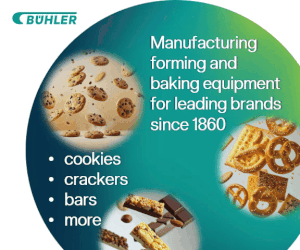KANSAS CITY, MO — For the past year, the pandemic has sent the US economy into relative upheaval with shutdowns sending unemployment rates through the roof and panic buying clearing bread off store shelves and skyrocketing sales data.
In a keynote address during the American Society of Baking’s BakingTECH conference held Feb. 16-18, Alan Beaulieu, president of ITR Economics, shared his company’s methodology for tracking trends with a proprietary set of theories for developing economic forecasts.
With COVID-19 cases finally coming down and vaccines rolling out, hope may finally be on the horizon. So, what will that mean for economic activity looking ahead?
We are obviously in the midst of radical change — whether pandemic- or government-driven — that has reached crisis-level proportions, but one thing remains: Our economy will move forward.
“We will continue to employ people,” Beaulieu said. We will continue to make money for the stakeholders — from the shareholders to the employees to customers — and we’re going to do what’s necessary. You’re here; you’ve proven that you can get through it.”





